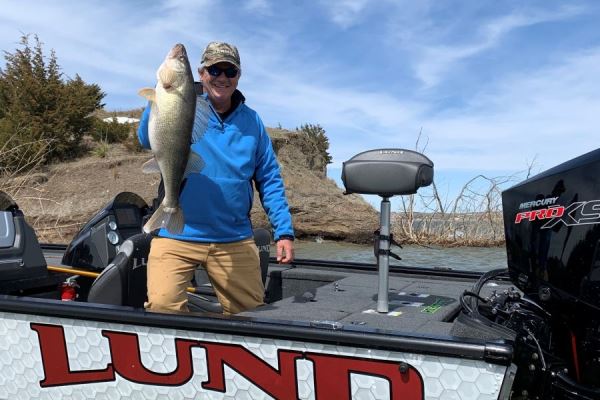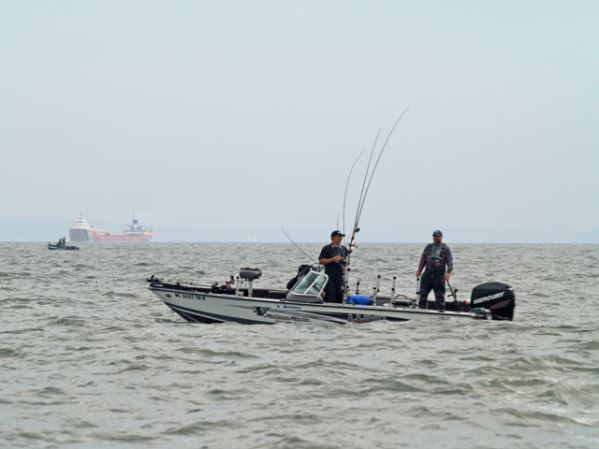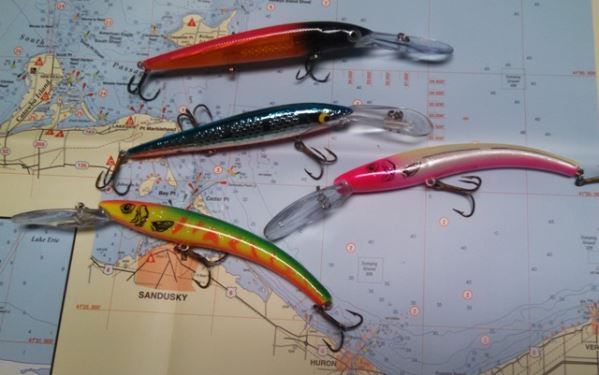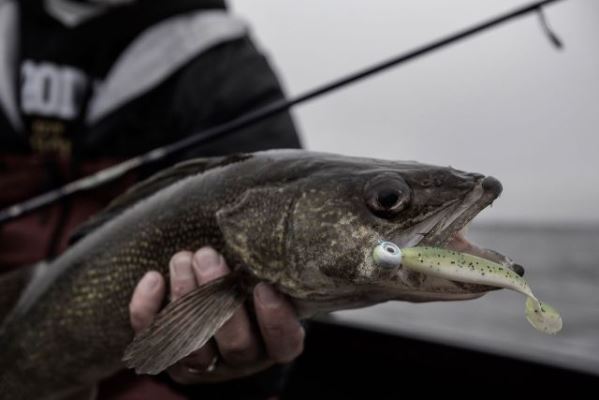 Walleye-catching experts – fishing guides, charter captains and recreational anglers alike – can be found in any Great Lakes port that supports a healthy population of the species, and most of these anglers are very good at locating and catching ‘eyes in their local waters. Touring pros who fish the walleye tournament circuits need a special skill set to remain competitive from port to port, and I’ve been fortunate enough to meet and interview a few of the best.
Walleye-catching experts – fishing guides, charter captains and recreational anglers alike – can be found in any Great Lakes port that supports a healthy population of the species, and most of these anglers are very good at locating and catching ‘eyes in their local waters. Touring pros who fish the walleye tournament circuits need a special skill set to remain competitive from port to port, and I’ve been fortunate enough to meet and interview a few of the best.
One of my favorites is Ted Takasaki, who is always open to sharing information in his seminars and magazine articles. I take every advantage of sitting in on one of The National Freshwater Fishing Hall of Famer’s sport show clinics, talking to him at trade shows, or reading his articles on catching walleyes.
One of the factors that Great Lakes anglers need to deal with in mid- to late-summer is wind, and Ted is a master at using a breeze to his advantage when pursuing walleyes. According to the touring pro, wind and the currents it creates, invigorates predator species like walleyes. A fact he says too few fishermen realize that the fish actually respond positively to changes in wind direction. That’s one reason why walleye have earned a reputation for being here one day and gone the next. And this is why walleye on the windward side of structure can be especially aggressive.
The problem is, boat control becomes an issue when Ma’ Nature kicks up anything more than a “walleye chop” and too many walleye anglers sacrifice catching for comfort. They duck into the lee side of a point or island, or tuck their boat up as close to shore as possible to avoid the brunt of the blow. And in doing so, often leave the height of the bite generated by the wind on the exposed water.
Predator species such as walleye and salmonids follow schools of baitfish, the locations of which can literally change  with the wind, explains the former president of Lindy-Little Joe Tackle. That’s because those minnow are also foragers, following their own meals that are comprised of plankton. The microscopic food source moves at the mercy of the wind and current, and the bait fish follow – with the gamefish that feed on the forage fish in tow.
with the wind, explains the former president of Lindy-Little Joe Tackle. That’s because those minnow are also foragers, following their own meals that are comprised of plankton. The microscopic food source moves at the mercy of the wind and current, and the bait fish follow – with the gamefish that feed on the forage fish in tow.
It’s no secret that walleye and other predator species often feed actively on the windward side of a lake. Whether up against the wind-battered shore or over underwater structure that is affected by the breeze and the currents it brings, walleyes will put on the feedback chasing baitfish that are taking advantage of plankton concentrated by the conditions. A steady wind in one direction over the course of a day or two can ignite baitfish and gamefish alike, but even a sudden strong wind can turn on action on reefs, points, and islands because wind is an ally to walleyes in two other ways, according to the walleye pro.
A good blow creates waves that stir up the lake bottom and reduces visibility. Wind-blown waves also scatter surface light and reduces its penetration. The combination of roiled water and low light gives walleyes a huge advantage when feeding on the shallows, when their highly developed eyesight and lateral lines come into play to locate their prey.
That means conditions that can create some fantastic catching can also be problematic for fishermen aboard boats that are not equipped to deal with the rock and roll conditions a stiff breeze brings to the party.
In terms of boats, this is a case when size does matter, but also design. High-gunwale boats offering plenty of freeboard and a deep, semi-vee hull are the best in a blow – both while on site and getting to and from the honey hole. So are boats that are designed to drift broadside to the wind, to allow a maximum number of anglers to allow anglers to spread their lines.
 If you decide you aren’t going to let a little breeze stand between you and a livewell full of walleye, prepare your boat for the conditions. Back up critical safety equipment aboard such as anchors and rode, bilge pumps, buy a comfortable PFD that you will actually wear while fishing, and make sure your electric and primary motors are in good working order.
If you decide you aren’t going to let a little breeze stand between you and a livewell full of walleye, prepare your boat for the conditions. Back up critical safety equipment aboard such as anchors and rode, bilge pumps, buy a comfortable PFD that you will actually wear while fishing, and make sure your electric and primary motors are in good working order.
Once you are ready to tackle fishing for walleyes in a brisk breeze, Ted advises looking at the lake and finding the windward sides of the nearest points, islands, and reefs that are getting pounded by the waves. Anchoring within casting distance of the wave-swept shallows or structure, he says to fan cast colorful deep-diving crankbaits to quickly probe the area for feeding fish, when lures with rattles can be especially effective.
Trolling crankbaits is another tactic to try, maneuvering the boat to get the lures into the wave-tossed feeding zone. In-line planer boards can be effective in such instances where the fish may be shallow or feeding among structure that might not allow clearance for a boat. You can also try bottom bouncers to work breaklines under electric power or while drifting, and a drift sock can be a handy tool to slow your boat’s pace when being blown down a break-line or across wind-swept flats or reefs.
Just don’t be tempted to try back-trolling while fishing in a healthy blow. The classic method of boat control is very effective when the conditions are right for trolling in reverse, but you don’t want to bet against Ma’ Nature by pitting a flat transom against a stiff breeze and the waves she brings to the fight.
If back-trolling – or fishing in comfort – is called for while walleye fishing and the wind stiffens, by all means, head  for the closest lee. Just brace yourself to experience more fishing than catching.
for the closest lee. Just brace yourself to experience more fishing than catching.
Captain Spotlight: Captain Steve Bender of Walleye Assassin Charters
Striking fear among walleyes, Captain Steve Bender of Walleye Assassin Charters out of Au Gres, Mich., on Lake Huron’s Saginaw Bay has had his charter captain shingle out for a little more than year, yet the 37 year-old father of one has already made a name for himself as a guide.
When he’s not behind the helm of his Aquasport guiding anglers to walleyes, including ice fishing for his favorite gamefish, them Steve is working the family farm.
“I have fished walleye since I was five years old,” said the captain, “From Saginaw Bay, Lake Huron to the Upper Peninsula. Walleye fishing is great year-round here on Lake Huron and Saginaw Bay has a ton of walleye for everyone to enjoy.”
He and his customers enjoy the boat too, a 2002 Aquasport 275 Explorer Tournament Master with twin 200hp Mercury outboards, which is perfect for the cruising and day trips he also offers customers.
“I like my boat because of the size it can accommodate six clients comfortably. It has all the amenities: stove, refrigerator, two livewell boxes, a fish cleaning station, plenty of gear storage compartments, head, shower and sleeping areas,” he explained. “And the walk-around style makes it easy to anchor and to tie down at the end of a day of catching.”
(989-324-7182 // www.awacinc.com)

